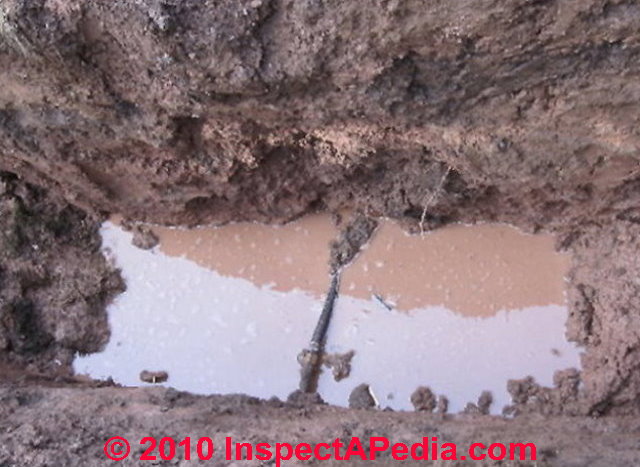Cracked Shallow Well Pumps Troubleshooting
Well Pump Troubleshooting and DIY Repair. Since well pumps are much more expensive, the longer pump life more than offsets the higher tank cost. Well water pump and water pressure tank replacement - diagnosis, costs, advice.How to diagnose bad water pressure or no water pressure (or water flow) in a building.
Shallow wells are typically wells that are less than 40 feet deep. The pumps that service these types of wells can be either a single-pipe or a double-jet pump. The jet-type pump forces water back into the suction line to aid in pulling the water to the surface. Both types of pumps use an electric motor to drive the centrifugal pump. Basic Operation Electric power is typically controlled by a pressure switch located on the rubber-bladder pressure tank. When the pressure falls in the sealed-water system, the pressure switch closes and electrical power is sent to the pump motor. The pump moves or rotates the centrifugal vanes and pulls the water to the surface.
The water in the suction pipe is held in place by a check valve. The check valve keeps the water in the suction pipe so the pump does not have to be primed on each use. Electricity Check that electrical power is being fed to the pressure switch by using a voltmeter and confirming the voltage required for the pumps operation. Typically most pumps require 240 VAC.
This voltage reading should be at the switches' contacts connected to the wire coming from the circuit-breaker panel box. Observe the attached pressure gauge so the switch closes at the correct amount of low pressure. If no gauge is installed, you can insert one into a 1/4 inch diameter fitting located next to the pressure switch. Typically the pressure switch should close when the gauge reads 20 PSI or less.
Shallow Well Pumps Sears
If the switch fails to close at low pressure it may be stuck or it may need adjustment. Follow the instructions on the inside cover of the pressure switch. Check the contacts of the switch itself. They may need cleaning if the small copper discs are corroded or are severely pitted. Upon closing and with proper voltage, the pump should be operational. If the pump fails to operate and the pressure switch checks out with the voltage meter, the pump motor may need to be replaced. The Pump Check the pump casing for leaks.
Even a small crack can cause the pump to loose its prime for pulling the water from the well. Air can move into the water-pump chamber and create a vacuum. This vacuum can interrupt water flow. Air entry is also caused by a poor seal on the suction pipe. The suction pipe should be holding a full column of water.
Observe the pressure gauge on the water system. With all water outlets shut off, the gauge should hold pressure with no loss. If the gauge slowly loses pressure check the water system for leaks. If no leaks are found then the check valve is failing. The suction pipe will have to be pulled and the valve repaired or replaced.
The Rubber Bladder Tank Inside the pressure-tank reservoir is a large rubber bladder, much like a rubber inner tube. This bladder helps the water system to maintain a high pressure and dampens the action of the water in the closed system. Low bladder pressure will cause the water pump to behave erratically with a constant on and off operation when a faucet or spigot is opened. The bladder pressure can be checked with an air pressure gauge.
The bladder should hold approximately 35 to 45 PSI. If it is low, fill the bladder with an air compressor. If the bladder constantly needs the air to be refilled it may have a hole and the entire tank will have to be replaced.
For most tank troubleshooting you will need a good tire pressure gauge, and may need an air compressor. NOTE: Many tank problems will require that you check the tank's pre-charge air pressure. In order to set it correctly, you will need to know the settings of the switch that controls your well pump. These settings are usually printed on a label on the inside of the switch cover. In particular, you will need to know the turn-on pressure of the switch.

It may be labelled as 'cut-in' or 'cut-on' pressure. Your tank's pre-charge will be set 2 psi below that number. Always check the tank's pre-charge with no water pressure in the system.

Shut off power to the pump. Open any faucet to allow the water to leave the system. Leave the faucet open while checking the tank.